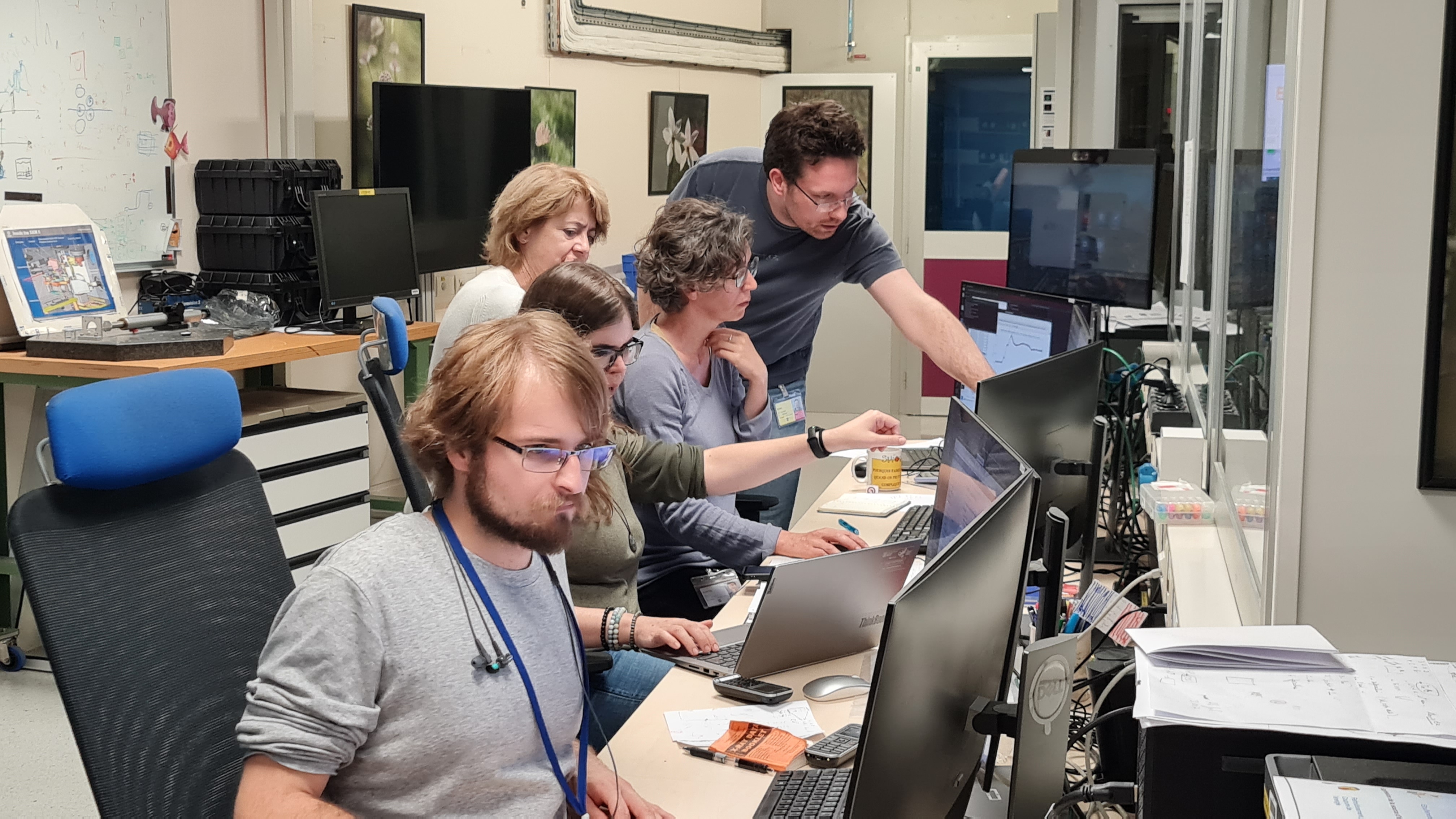As part of Ruth Sadurní’s PhD research, a highly successful experiment was conducted at the European Synchrotron Radiation Facility (ESRF) on the ID21 X-ray Microscopy Beamline, investigating copper speciation in lustre layers. This research, supervised by Trinitat Pradell and Judit Molera, with contributions from Eloi Pineda and Bert Jan Baas, marks a significant advancement in the understanding of lustre decoration techniques. The beamline scientist, Marine Cotte, and Clément Hole played crucial roles in making the experiment possible, enabling precise measurements at the nanostation with an X-ray beam focused down to 200 nm.
Lustre, a historical decorative technique applied to glazed ceramics and glass, is renowned for its iridescent, metallic appearance that often resembles gold. This effect arises from a metal-glass nanocomposite layer composed of silver and/or copper nanoparticles embedded in a glass matrix, located at a depth of 40 to 200 nm and with a variable thickness from 100 nm to 5 µm. The lustre layer is formed through an ionic exchange process, where alkali ions in the glass are replaced by copper and silver ions from a precursor applied to the surface.
During the experiment, advanced X-ray fluorescence (XRF) and X-ray absorption near edge structure (XANES) techniques were employed at submicron resolution to study cross-sections of the lustre layers. With the precision of the 200 nm X-ray beam, the team was able to map the distribution of metallic and ionic copper and silver species, revealing critical insights into the relationship between the nanoparticles’ concentration and the optical properties of lustre, such as colour, gloss, and iridescence.
This research not only contributes to the scientific understanding of lustre as a metal-glass nanocomposite but also offers significant historical insights. By correlating the chemical composition and distribution of copper and silver with production techniques from different historical periods and regions, the study deepens our knowledge of ancient technologies used in lustre production across various cultural centres.
This successful experiment represents a vital milestone in Ruth Sadurní’s PhD work. The precise measurements, made possible by the ID21 beamline’s capabilities, including the focused 200 nm X-ray beam, highlight the importance of synchrotron-based techniques in the field of cultural heritage and material science.


Leave a Reply